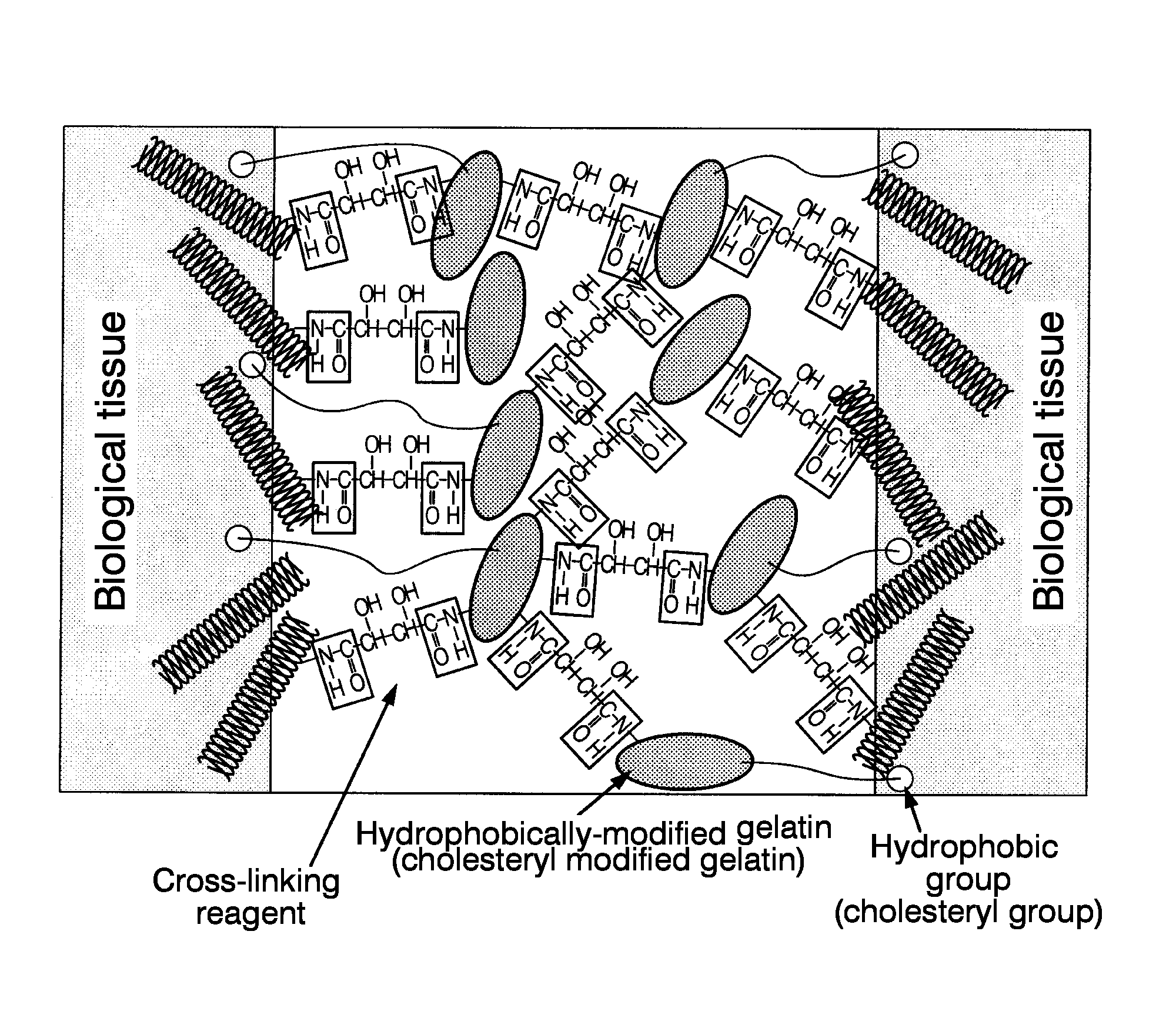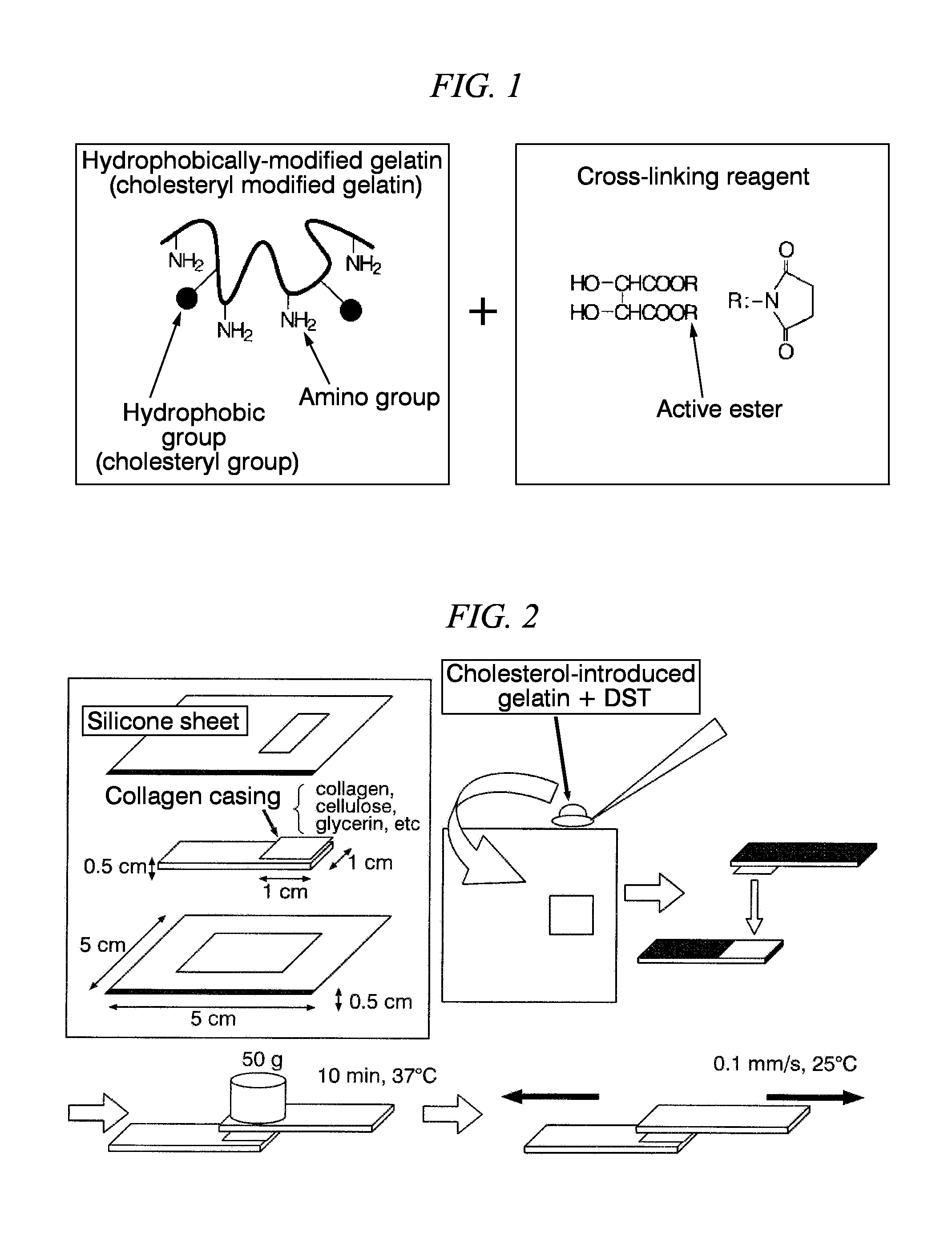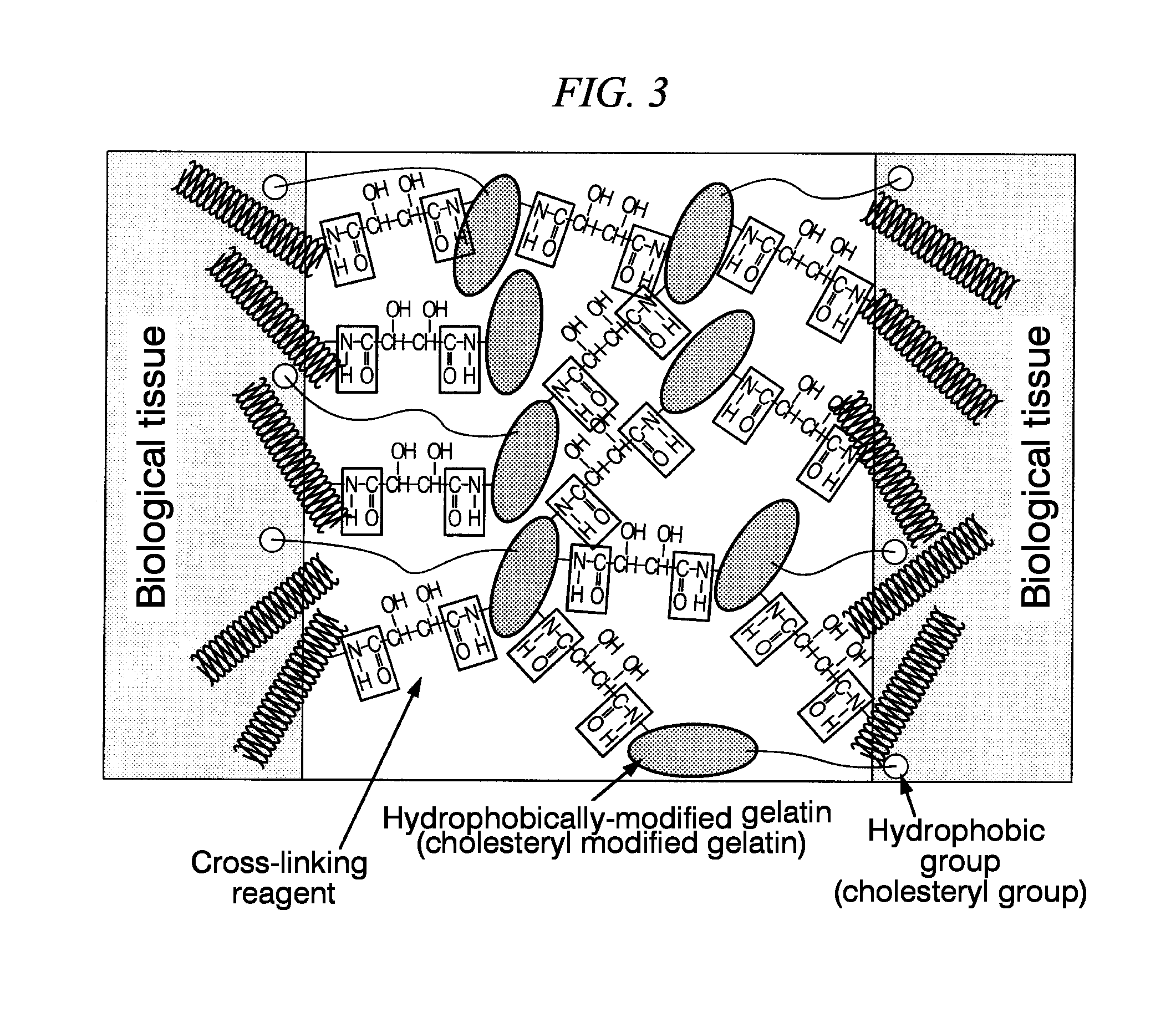Two-component tissue adhesive and method for producing same
- Summary
- Abstract
- Description
- Claims
- Application Information
AI Technical Summary
Benefits of technology
Problems solved by technology
Method used
Image
Examples
example 1
Synthesis of Hydrophobically-Modified Gelatin (Cholesteryl Groups-Modified Gelatin
[0089]First, 300 g of gelatin was dissolved by stirring in 2.97 L of DMSO, and kept at 80° C. Next, 0.03 L of triethylamine was added thereto.
[0090]Next, cholesteryl chloroformate was added at 10% with respect to the amino groups of the gelatin, and dissolved by stiffing at 80° C. The mixture was allowed to react by stiffing under a nitrogen atmosphere for a day and a night.
[0091]Next, the obtained crude cholesteryl groups-modified gelatin solution was added dropwise to 9 L of ice cold ethanol so as to stop the reaction. The reaction product was precipitated, and then was filtrated through a glass filter. This was further washed with 3 L of ethanol three more times. Furthermore, the residue was again washed with 3 L of ethyl acetate three times, and then freeze-dried. By so doing, a white solid matter (cholesteryl group-modified gelatin) was obtained.
(Mixing with Cross-Linking Reagents: Preparation of ...
example 2
[0104]The tissue adhesive of Example 2 was produced in the same manner as that of Example 1, except that the preparation was conducted so that the percent by mass of the cholesteryl group-modified gelatin in the tissue adhesive would be 20 (wt %) (final concentration of 70 wt %).
[0105]The adhesive strength of the tissue adhesive of Example 2 was 61.5 kPa. Moreover, after 14 days, the degradability and absorptivity were observed, meaning that the biocompatibility was seen.
example 3
[0106]The tissue adhesive of Example 3 was produced in the same manner as that of Example 1, except that the preparation was conducted so that the percent by mass of the cholesteryl group-modified gelatin in the tissue adhesive would be 30 (wt %) (final concentration of 70 wt %).
[0107]The adhesive strength of the tissue adhesive of Example 3 was 58.6 kPa.
PUM
| Property | Measurement | Unit |
|---|---|---|
| Fraction | aaaaa | aaaaa |
| Fraction | aaaaa | aaaaa |
| Fraction | aaaaa | aaaaa |
Abstract
Description
Claims
Application Information
 Login to View More
Login to View More - R&D
- Intellectual Property
- Life Sciences
- Materials
- Tech Scout
- Unparalleled Data Quality
- Higher Quality Content
- 60% Fewer Hallucinations
Browse by: Latest US Patents, China's latest patents, Technical Efficacy Thesaurus, Application Domain, Technology Topic, Popular Technical Reports.
© 2025 PatSnap. All rights reserved.Legal|Privacy policy|Modern Slavery Act Transparency Statement|Sitemap|About US| Contact US: help@patsnap.com



